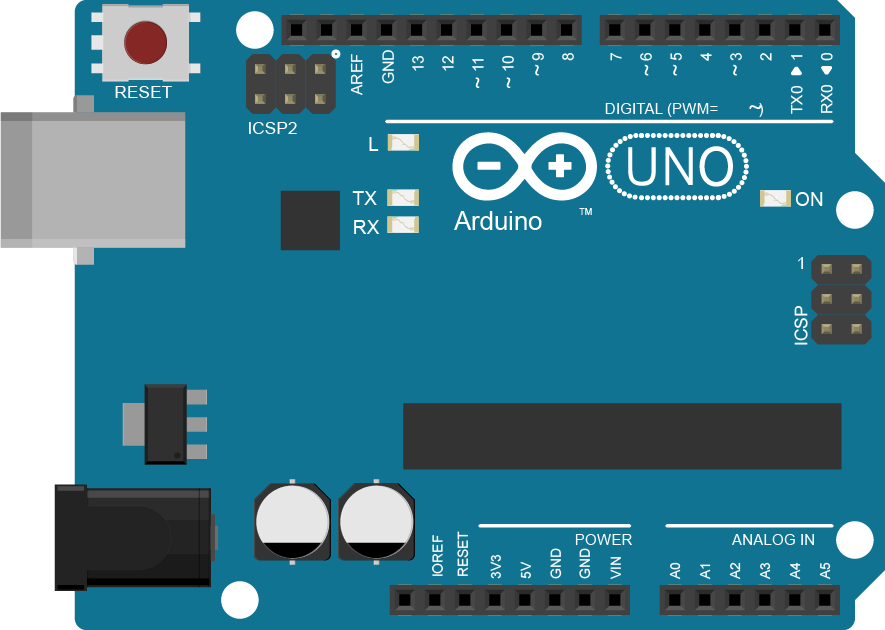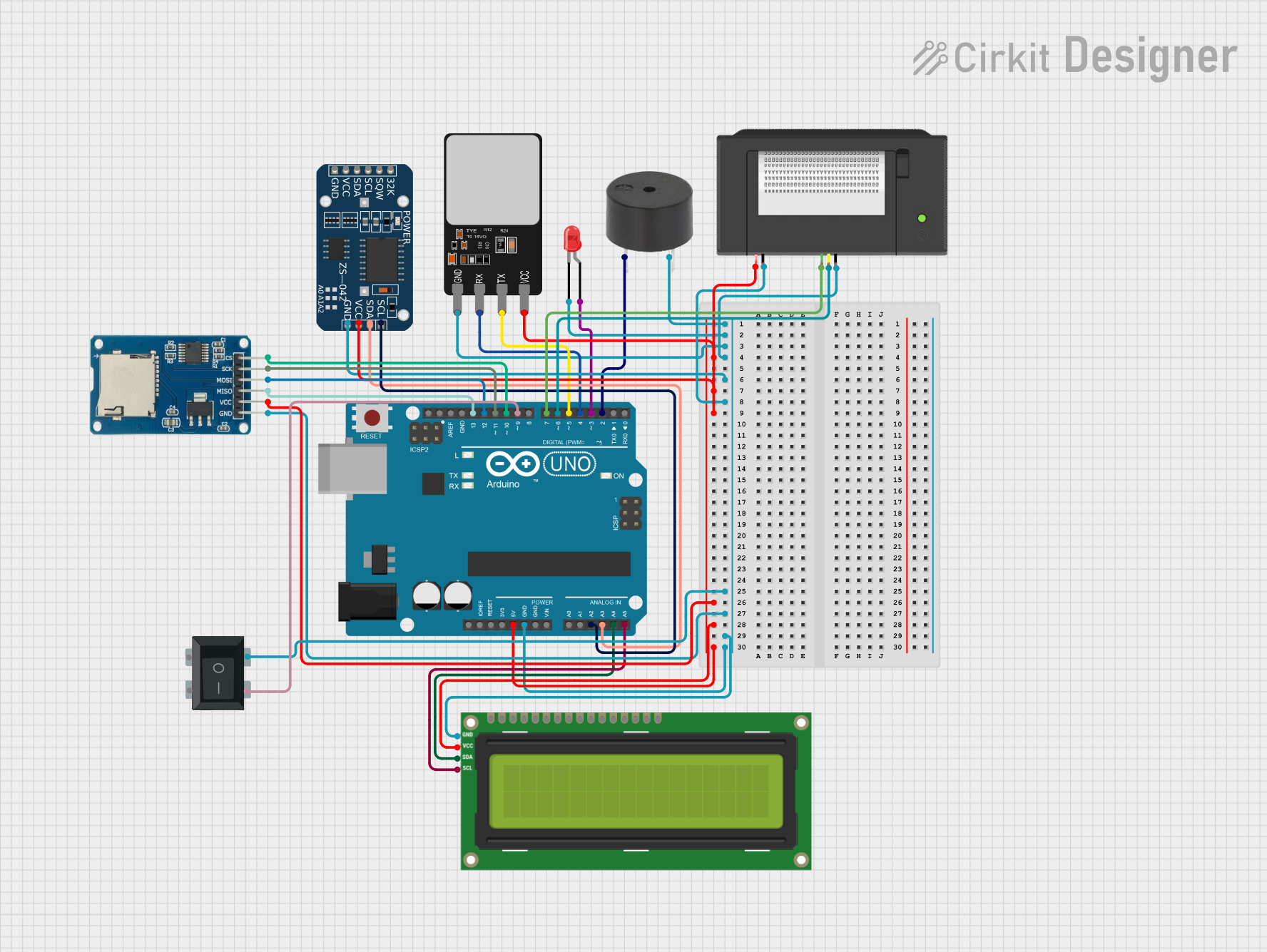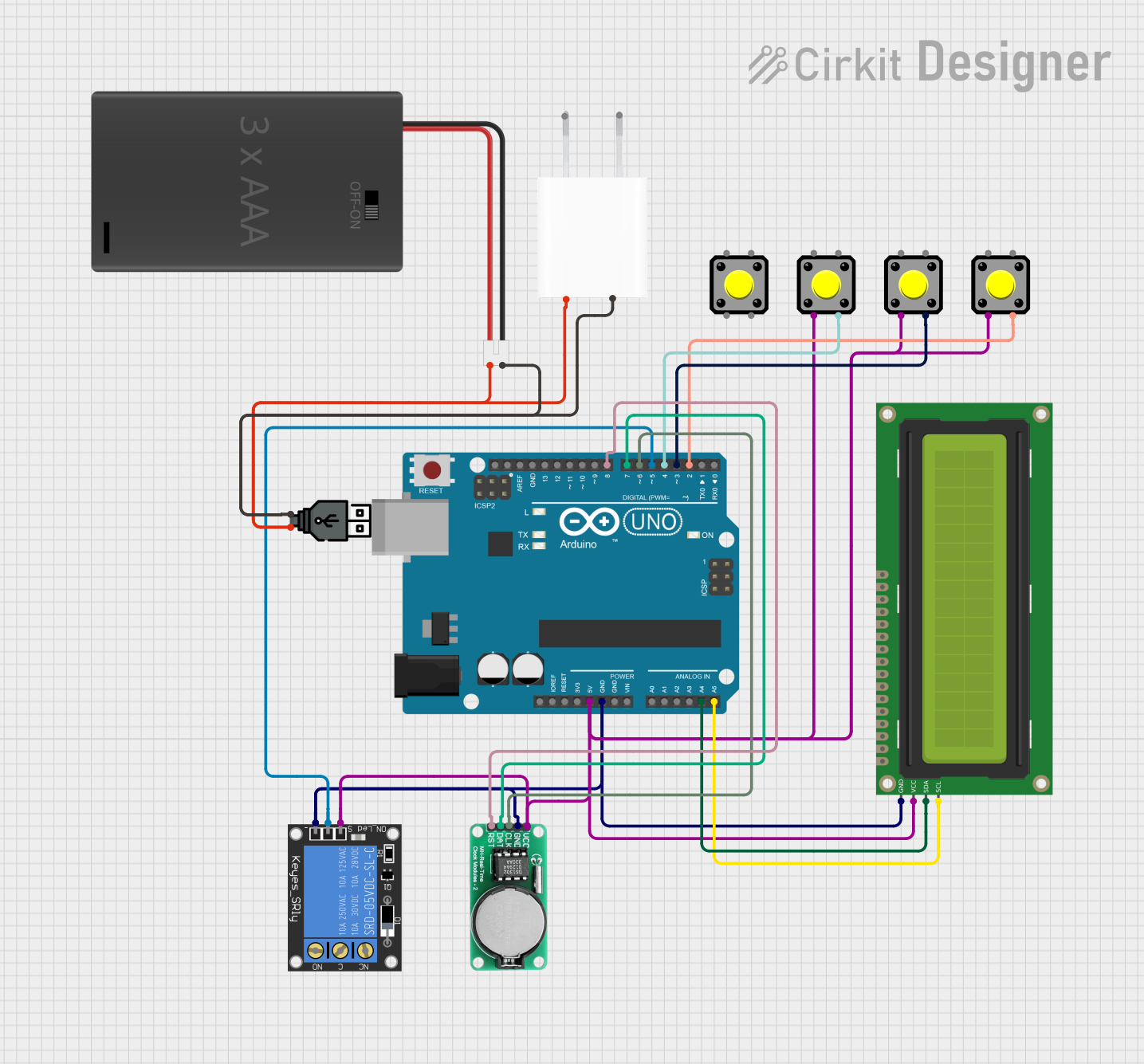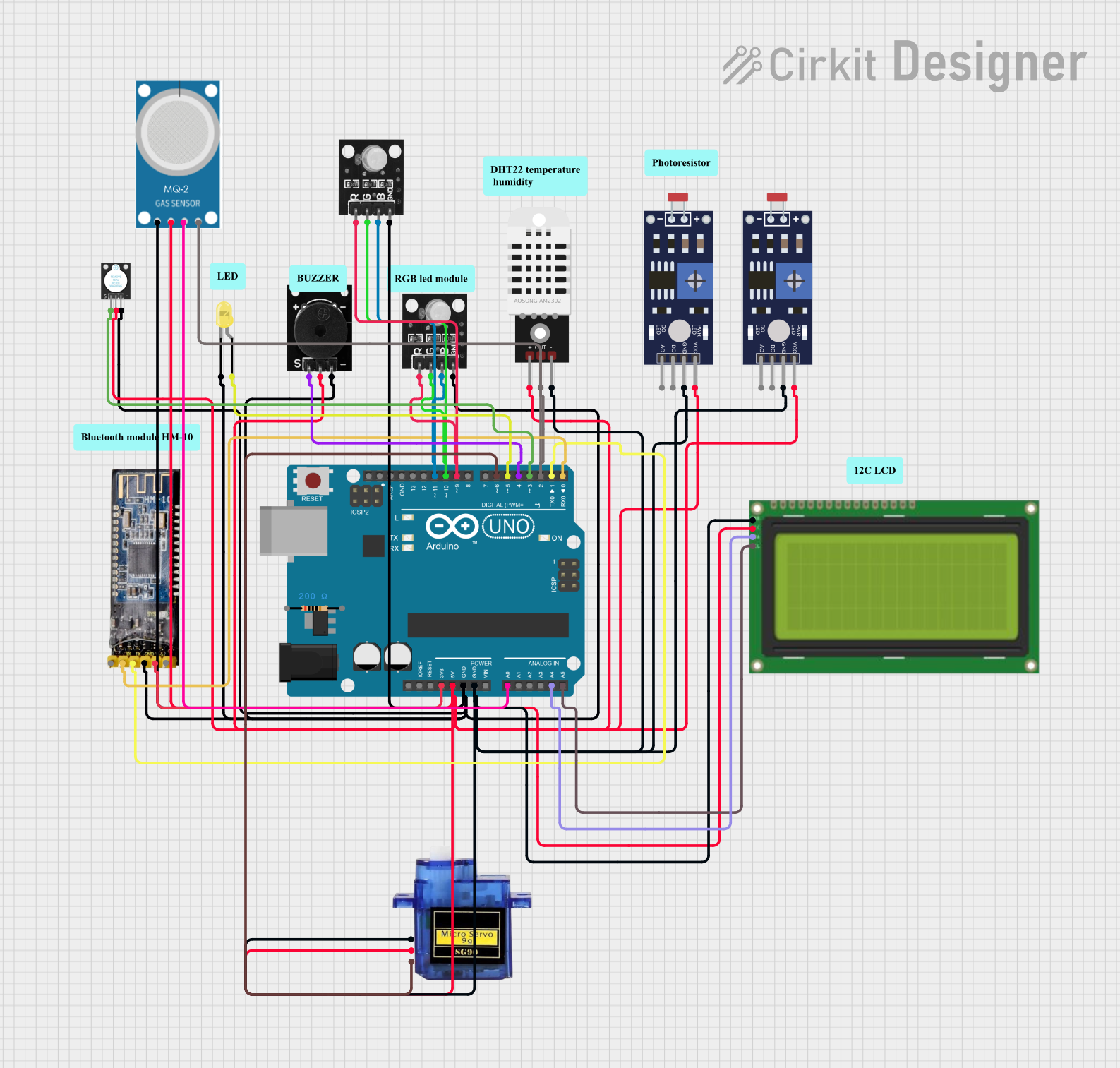
How to Use Arduino UNO: Examples, Pinouts, and Specs

 Design with Arduino UNO in Cirkit Designer
Design with Arduino UNO in Cirkit DesignerIntroduction
The Arduino UNO is a microcontroller board based on the ATmega328P. It is one of the most popular and versatile development boards in the Arduino ecosystem, widely used for building digital devices and interactive objects that can sense and control the physical world. Its ease of use, extensive community support, and compatibility with a wide range of sensors and actuators make it an excellent choice for both beginners and experienced developers.
Explore Projects Built with Arduino UNO

 Open Project in Cirkit Designer
Open Project in Cirkit Designer
 Open Project in Cirkit Designer
Open Project in Cirkit Designer
 Open Project in Cirkit Designer
Open Project in Cirkit Designer
 Open Project in Cirkit Designer
Open Project in Cirkit DesignerExplore Projects Built with Arduino UNO

 Open Project in Cirkit Designer
Open Project in Cirkit Designer
 Open Project in Cirkit Designer
Open Project in Cirkit Designer
 Open Project in Cirkit Designer
Open Project in Cirkit Designer
 Open Project in Cirkit Designer
Open Project in Cirkit DesignerCommon Applications and Use Cases
- Prototyping and development of IoT (Internet of Things) devices
- Robotics and automation projects
- Data acquisition and environmental monitoring
- Home automation systems
- Educational purposes for learning programming and electronics
Technical Specifications
The Arduino UNO is designed to provide a balance of performance, simplicity, and flexibility. Below are its key technical details:
General Specifications
| Parameter | Value |
|---|---|
| Microcontroller | ATmega328P |
| Operating Voltage | 5V |
| Input Voltage (recommended) | 7-12V |
| Input Voltage (limit) | 6-20V |
| Digital I/O Pins | 14 (6 provide PWM output) |
| Analog Input Pins | 6 |
| DC Current per I/O Pin | 20 mA |
| Flash Memory | 32 KB (0.5 KB used by bootloader) |
| SRAM | 2 KB |
| EEPROM | 1 KB |
| Clock Speed | 16 MHz |
| USB Connector | Type-B |
Pin Configuration and Descriptions
The Arduino UNO has a total of 28 pins, including digital, analog, power, and communication pins. Below is a detailed description of the pin configuration:
Digital Pins
| Pin Number | Functionality | Description |
|---|---|---|
| 0 (RX) | UART Receive | Used for serial communication (input) |
| 1 (TX) | UART Transmit | Used for serial communication (output) |
| 2-13 | General Purpose I/O | Can be used as input or output pins |
| 3, 5, 6, 9, 10, 11 | PWM Output | Provide Pulse Width Modulation (PWM) |
Analog Pins
| Pin Number | Functionality | Description |
|---|---|---|
| A0-A5 | Analog Input | Read analog signals (0-5V) |
Power Pins
| Pin Name | Functionality | Description |
|---|---|---|
| VIN | Input Voltage | External power supply input (7-12V) |
| 5V | Regulated 5V Output | Powers external components |
| 3.3V | Regulated 3.3V Output | Powers low-voltage components |
| GND | Ground | Common ground for the circuit |
| RESET | Reset | Resets the microcontroller |
Communication Pins
| Pin Name | Functionality | Description |
|---|---|---|
| SDA | I2C Data Line | Used for I2C communication |
| SCL | I2C Clock Line | Used for I2C communication |
| RX/TX | UART Communication | Serial communication pins |
Usage Instructions
The Arduino UNO is straightforward to use and can be programmed using the Arduino IDE. Below are the steps to get started:
Step 1: Setting Up the Arduino UNO
- Download and install the Arduino IDE from the official Arduino website.
- Connect the Arduino UNO to your computer using a USB Type-B cable.
- Open the Arduino IDE and select the correct board and port:
- Go to Tools > Board > Arduino UNO.
- Go to Tools > Port and select the port corresponding to your Arduino UNO.
Step 2: Writing and Uploading Code
- Write your code in the Arduino IDE. For example, the following code blinks an LED connected to pin 13:
// Blink an LED connected to pin 13
void setup() {
pinMode(13, OUTPUT); // Set pin 13 as an output
}
void loop() {
digitalWrite(13, HIGH); // Turn the LED on
delay(1000); // Wait for 1 second
digitalWrite(13, LOW); // Turn the LED off
delay(1000); // Wait for 1 second
}
- Click the Upload button in the Arduino IDE to upload the code to the board.
Step 3: Connecting Components
- Use jumper wires to connect sensors, actuators, and other components to the appropriate pins.
- Ensure that the power supply voltage and current requirements of the components are within the Arduino UNO's limits.
Important Considerations and Best Practices
- Avoid drawing more than 20 mA from any single I/O pin to prevent damage.
- Use external power sources for high-power components like motors or relays.
- Always connect the GND pin of the Arduino UNO to the ground of your circuit.
- Use pull-up or pull-down resistors for stable digital input signals.
Troubleshooting and FAQs
Common Issues and Solutions
Problem: The Arduino UNO is not detected by the computer.
- Solution: Ensure the USB cable is properly connected and functional. Try a different USB port or cable. Install the necessary drivers if prompted by the Arduino IDE.
Problem: The code does not upload to the board.
- Solution: Verify that the correct board and port are selected in the Arduino IDE. Check for any syntax errors in the code.
Problem: The connected components are not working as expected.
- Solution: Double-check the wiring and connections. Ensure that the components are compatible with the Arduino UNO's voltage and current ratings.
Problem: The board overheats during operation.
- Solution: Reduce the load on the I/O pins. Use external power sources for high-power components.
FAQs
Can I power the Arduino UNO with a battery?
- Yes, you can power the Arduino UNO using a 9V battery connected to the VIN pin or the DC power jack.
What is the maximum current the Arduino UNO can supply?
- The 5V pin can supply up to 500 mA when powered via USB, and up to 1A when powered via an external power source.
Can I use the Arduino UNO for wireless communication?
- Yes, you can use wireless modules like the HC-05 Bluetooth module or ESP8266 Wi-Fi module with the Arduino UNO.
Is the Arduino UNO compatible with shields?
- Yes, the Arduino UNO is compatible with a wide range of shields designed for the Arduino ecosystem.
By following this documentation, you can effectively use the Arduino UNO for a variety of projects and applications.